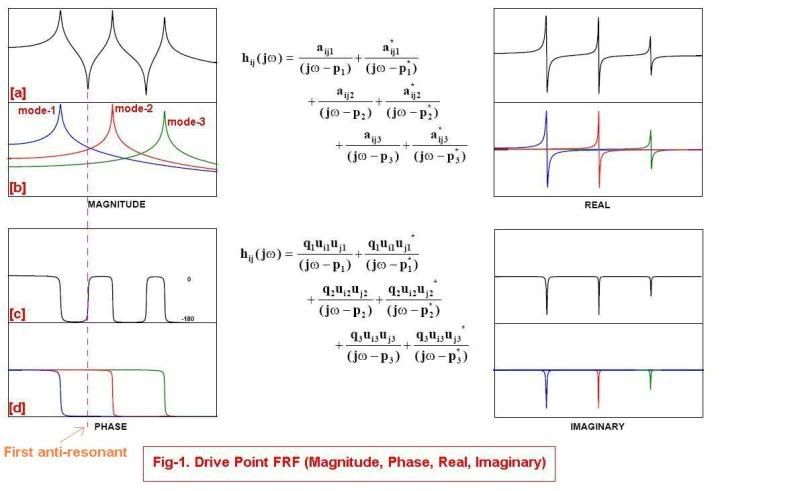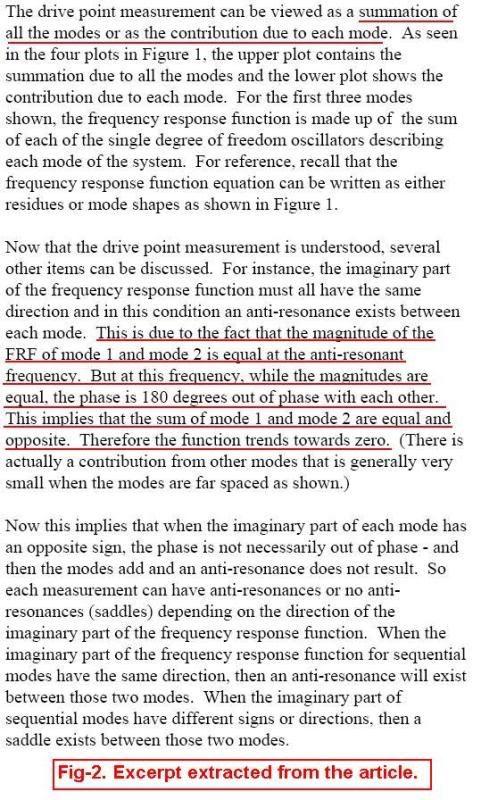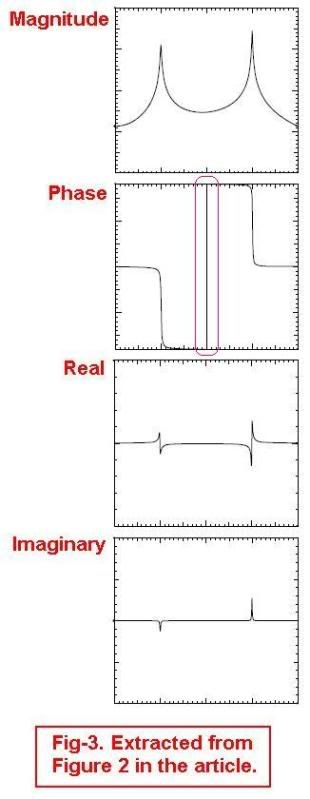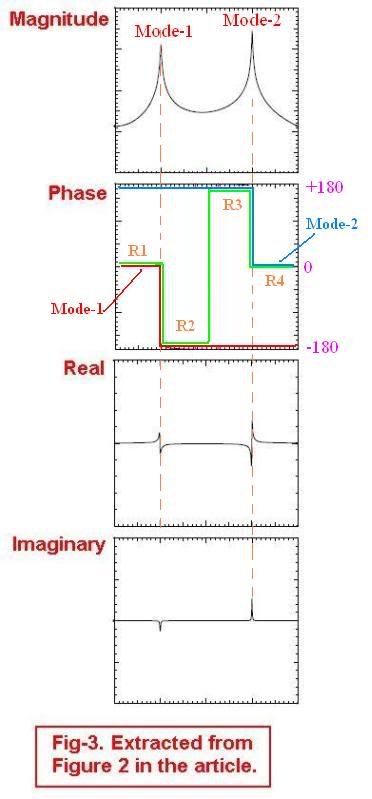onemilimeter
Electrical
- Jul 25, 2009
- 54
The following information was extracted from this article:
Kindly refer to Fig-1 and Fig-2. As stated in Fig-2:
"...This is due to the fact that the magnitude of the FRF of mode 1 and mode 2 is equal at the anti-resonant frequency. But at this frequency, while the magnitudes are equal, the phase is 180 degrees out of phase with each other. This implies that the sum of mode 1 and mode 2 are equal and opposite. Therefore the function trends towards zero..."
I try to understand the statement with the help of Fig-1[c] and Fig-1[d]. But I still don't understand why "the sum of mode 1 and mode 2 are opposite... and how this cause the function trends towards zero". Does the author mean the FRF trends towards zero? I also do not understand, with the help of Fig-1[d], why does the summation phase (in Fig-1[c]) change from -180 to 0 degree at first anti-resonant point?
Kindly refer to Fig-3. I also don't understand why the phase (the edge bounded by a 'pink rectangular') changes from -180 to 180 degree as show in the phase plot?
Thank you very much



Kindly refer to Fig-1 and Fig-2. As stated in Fig-2:
"...This is due to the fact that the magnitude of the FRF of mode 1 and mode 2 is equal at the anti-resonant frequency. But at this frequency, while the magnitudes are equal, the phase is 180 degrees out of phase with each other. This implies that the sum of mode 1 and mode 2 are equal and opposite. Therefore the function trends towards zero..."
I try to understand the statement with the help of Fig-1[c] and Fig-1[d]. But I still don't understand why "the sum of mode 1 and mode 2 are opposite... and how this cause the function trends towards zero". Does the author mean the FRF trends towards zero? I also do not understand, with the help of Fig-1[d], why does the summation phase (in Fig-1[c]) change from -180 to 0 degree at first anti-resonant point?
Kindly refer to Fig-3. I also don't understand why the phase (the edge bounded by a 'pink rectangular') changes from -180 to 180 degree as show in the phase plot?
Thank you very much




